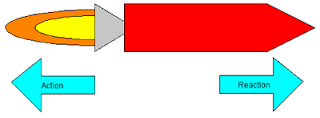The first thing that people would notice about the pole is that they are covered with ice all year round. Even with the sun shining it never get warm enough to melt the ice at the poles. The ice may melt on the edge of the polar regions, but not in the center.
When ice sheets cover a whole land, they are called continental glaciers. Glaciers are not frozen sea water. The ice in this glaciers started as snow. Polar regions do not have much snow falling each year, but the snow that does fall will never melts. It's packed down and forms thick ice.
Even though polar region is cold there is animals living there. Like polar bears, penguins, birds, etc. Polar bears and penguins have thick fur that keeps the heat in their body from escaping. Maybe you have know that the penguins are the only bird that can't fly. They can 'fly' but in the water. It was a very good swimmer. Maybe you are asking how came the penguins don't freeze on the freezing water of the poles? It's because of their fur I talk earlier. They have two layers of fur: The outer layer is waterproof and the second one or the inner layer is made up they can hold air. Most birds live in the poles but only in the summer.
The poles do have seasons. When the summer sun came it may melt the outer ice but most ice don't melt. That's why the poles seem to shrink in the summer and grow in the winter.
Source :
Alpha Omega Curriculum
Train up a child in the way he should go; and when he is old, he will not depart from it. Proverbs 22:6
Thursday, May 10, 2012
Wednesday, May 9, 2012
Sir Isaac Newton
Newton was born in 25 December of 1642 in England. Newton was an physicist, mathematician, astronomer, natural philosopher, alchemist, and theologian, who has been " considered by many to be the greatest and most influential scientist who ever lived. He died in 20 March of 1727, in age 84.
One of Newton's laws was the law of motion. The law has three parts, but I'l just explain the third law. According to Newton's third law, " for every action there is an equal and opposite re-action". What does this means? This means that for every force there is a reaction force that is equal in size, but opposite in direction. That is to say that whenever an object pushes another object it gets pushed back in the opposite direction equally hard.
Let's study how a rocket works to understand Newton's third law
The rockets action is to push down on the ground with the force of it's powerful
engines, and the reaction is that the ground pushes the rocket upwards with an equal force.
Source :
Teacher tech
Wikipedia
One of Newton's laws was the law of motion. The law has three parts, but I'l just explain the third law. According to Newton's third law, " for every action there is an equal and opposite re-action". What does this means? This means that for every force there is a reaction force that is equal in size, but opposite in direction. That is to say that whenever an object pushes another object it gets pushed back in the opposite direction equally hard.
Let's study how a rocket works to understand Newton's third law
The rockets action is to push down on the ground with the force of it's powerful
engines, and the reaction is that the ground pushes the rocket upwards with an equal force.
Source :
Teacher tech
Wikipedia
Subscribe to:
Comments (Atom)

